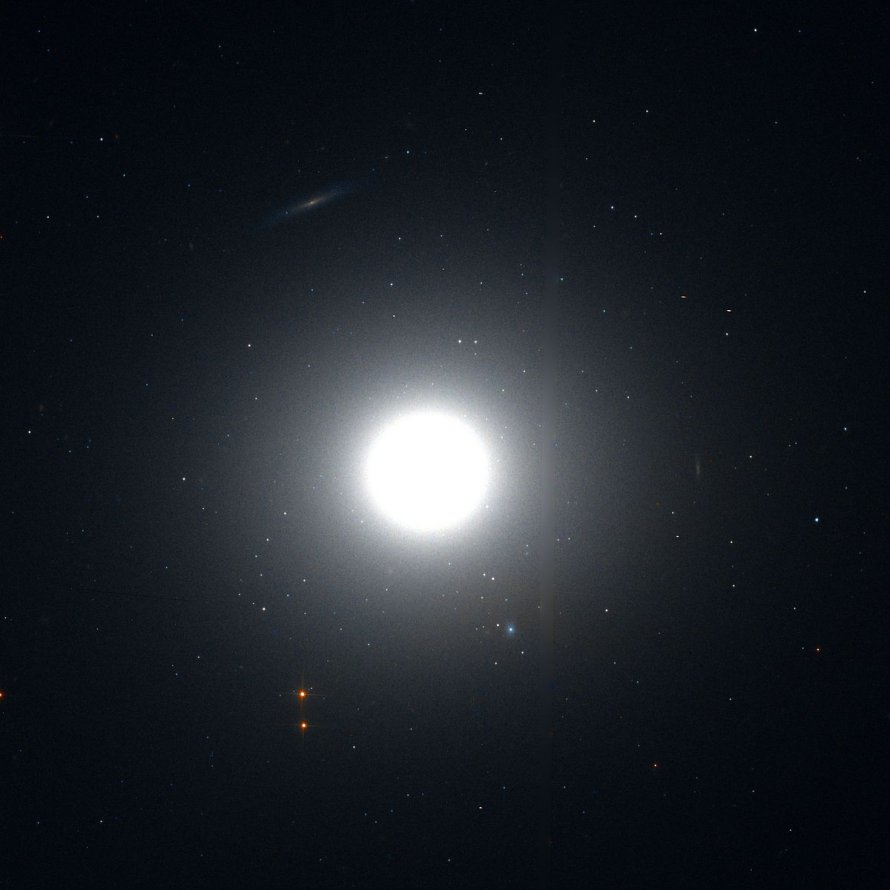M89 (NGC 4552)
Messier 89 (NGC 4552) is an elliptical galaxy located in the constellation Virgo in the Virgo Cluster of galaxies. M89 is 50000000 light years away from Earth.
M89 is best viewed during late spring, is magnitude 9.8, and can be viewed with small telescope. M89 is 5' x 4.7' in apparent size. For reference, the full moon is 30'.
Observing difficulty: Hard
- Name:
- Type:
- elliptical galaxy
- Constellation:
- Virgo
- NGC or IC:
- NGC 4552
- Magnitude:
- 9.8
- Viewing:
- small telescope
- Size:
- 5' x 4.7'
- Distance (light years):
- 50000000 LY
- RA:
- 12h 35.7m
- Dec:
- 12 34'
- Season:
- late spring
- Galaxy group:
- Virgo Cluster
- Messier Marathon #:
- 56
* The naked eye can see up to magnitude ~7-8 objects under ideal dark sky conditions.
Delving into the Elliptical Galaxy of the Virgo Cluster
Messier 89 (M89) is an elliptical galaxy located in the constellation Virgo and is part of the Virgo Cluster of galaxies. First discovered by French astronomer Charles Messier in 1781, M89 is an intriguing study subject for astronomers due to its unique structure and properties. Although it is not the most prominent member of the Virgo Cluster, M89 stands out with its nearly perfect spherical shape and the presence of an external structure, possibly indicating past interactions with other galaxies.
Key Characteristics of Messier 89
M89 is a type E0 elliptical galaxy, which means it appears perfectly circular in the sky due to our nearly face-on line of sight. However, the galaxy is likely an oblate spheroid in reality, meaning it is flattened along the axis that we happen to view edge-on. M89 is known for its highly uniform profile and minimal dust content, typical characteristics of elliptical galaxies.
One unusual feature of M89 is its external envelope structure that extends out to about 150,000 light-years from the galaxy's center. This structure is thought to have formed from the tidal debris resulting from past galactic interactions and mergers.
Magnitude and Size
Messier 89 has an apparent magnitude of about 9.8, making it too faint to be seen with the naked eye. It's more easily observed with a pair of binoculars or a small telescope, particularly under dark sky conditions. The angular size of M89 is 5.1 by 4.7 arcminutes, and it is located approximately 50 million light-years away from Earth.
Finding and Observing Messier 89
To locate M89, start by identifying the constellation of Virgo, which is most visible in the spring for observers in the Northern Hemisphere. M89 is found in the same field of view as several other Messier objects, including M58, M59, M60, M90, and M91, all located within the Virgo Cluster.
Even though it is not visible to the naked eye, under a dark sky and with a medium-sized telescope, M89 can be seen as a small, faint, round patch of light with a brighter center. The fine details of the galaxy, such as its extended envelope, are challenging to observe and are usually detected in long-exposure photographs or through larger, professional telescopes.
Despite its faintness and distance, M89 offers a fascinating glimpse into the universe's vastness and complexity, reminding us of the dynamic and ever-changing nature of galaxies.



